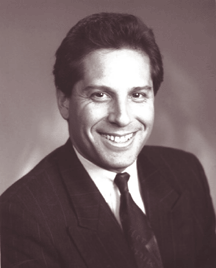Becoming A Better Forex Trader
Crosscurrents' Keith Raphael
by Jayanthi Gopalakrishnan
Keith Raphael, president of Crosscurrents Investment Advisory, served as principal of the Taylor-Raphael Group commodities trading firm of the New York Commodities Exchange from 1978 to 1986. He traded ECU arbitrage for Bank Brussels Lambert in New York from 1987 to 1990 and served as chief technical market analyst for Chase Manhattan Bank from 1990 to 1993. In 1993, the Euromoney survey of the 400 top corporations, investment banks, and funds in the US and Europe named Raphael as the top technical market analyst and charting service. In 1992 and 1993, the Greenwich Associates survey of 350 North American corporations, investment banks, and funds awarded him the same ranking. STOCKS & COMMODITIES Editor Jayanthi Gopalakrishnan interviewed Raphael via telephone on August 10, 2005.

All of the international dynamics I learned in school inspired me to trade in currencies as well as gold.
How did you get started in trading?
I came out of the University of Vermont in 1978 with an international economics and business background. Despite that fundamental background, I spent time doing statistical analysis for my courses. I got interested in gold charts because I was doing analysis on gold and how some of its movements affected statistics. After I graduated, a friend invited me to work for him on the floor of the commodity exchange. At that point, I was still interested in statistics, so I applied my knowledge of statistics to charting. That triggered my interest in trading.
Through 1980 in the massive gold move, I started doing some trading, which was, of course, really volatile and dangerous at that point. But I really enjoyed it, and I started to use pure technical analysis for all my trading. That's how I started--from statistical to basic technical analysis, then applying one to the other and developing my own concepts.
During the gold movement, were you trading on the floor or with your own account?
I was on the floor as an assistant, which is basically an order taker. We were doing brokerage mostly in cotton, but we also had a lot of cotton customers who wanted to speculate in gold. We were in the pit right next to the gold traders, so we would run orders over and have them execute gold. After six months, I opened my own account and started to trade, and I actually made a lot of money, as did the three guys I worked for. Once I started to apply my ideas, they made me a partner. I was able to bring in sufficient amounts of trading volume to warrant it.
I was really focused on the cotton exchange, but once we started to get into gold, I learned that the gold broker also had a foreign exchange business in Chicago. And then I really got interested. All of the international dynamics I had learned in school inspired me to trade in currencies as well as gold.
Finally, they opened the dollar index on the cotton exchange. By then I was a floor broker, and I started trading currencies from the first day of the opening of the dollar index. That's where a lot of the currency stimulation came from; initially through Chicago for a year, and then, when the dollar index opened. Understanding this kind of basket trading, arbitraging currencies against the dollar index components is what led to the next stage -- moving from the floor of the commodity exchange to Bank Brussels Lambert (BBL). The bank needed an ECU [European currency unit] arbitrageur for the trading room. And since I had dollar index experience and I had been doing arbs against futures in Chicago, I had the background for them to train me. So I became the ECU trader at BBL, one of only two clearers in ECU at that time in New York, along with Kredietbank.
I did a lot of arbitraging, applying technical analysis to figure out band structures that would identify when the model became extreme. Then I would arbitrage it for BBL.
From there, I moved on to Chase Manhattan Bank when I was offered an opportunity to trade and arb ECU on their currency cross desk. At Chase, I further developed the present foreign exchange advisory service that I have now. Within a year we had 520 of Chase's customers on my charting service list.
At that point, they decided to start a technical analytic group that would parallel their normal fundamental group. I started up that group in New York and had a guy in London. From that point on, I had as much time as I wanted to develop technical analytic models. Chase was willing to support anything that I needed. That gave me the luxury of having hours and hours each day to work on modeling. That's when it started to be a more sophisticated forecasting model.
Within a year, Chase had the first technical analytic addition to both Euromoney's and Greenwich Associates' surveys of the 400 top corporates in the United States. My service was ranked tops in 1992 and 1993 in these surveys.
Essentially, I've been able to sense when I'm near my peak and when it's time to make a change. In late 1993, I decided to jump from Chase and take my product private. I started a currency market forecasting advisory service with a handful of those 520 clients who were willing to come with me.
...Continued in the October issue of Technical Analysis of STOCKS & COMMODITIES
Excerpted from an article originally published in the October 2005 issue of Technical Analysis of STOCKS & COMMODITIES magazine. All rights reserved. © Copyright 2005, Technical Analysis, Inc.
Return to October 2005 Contents